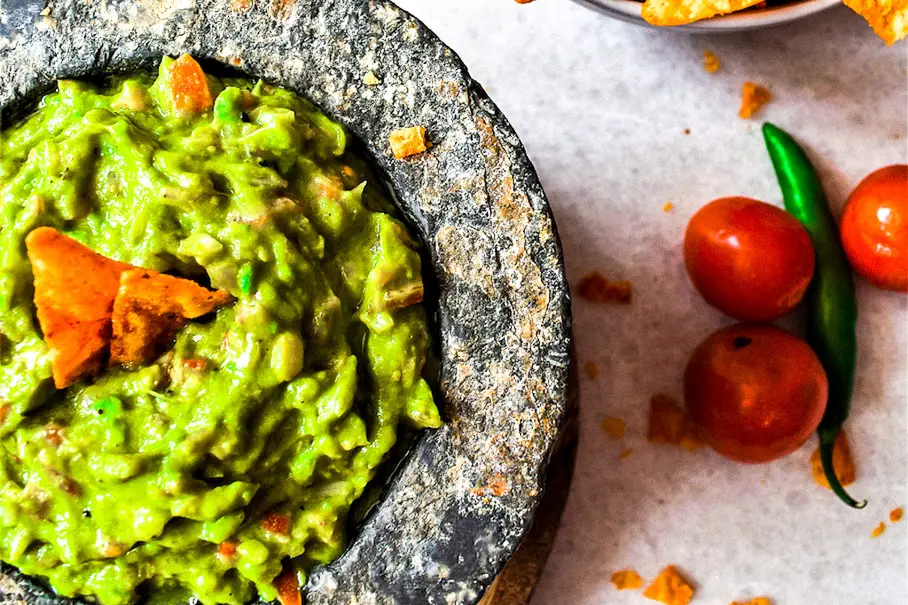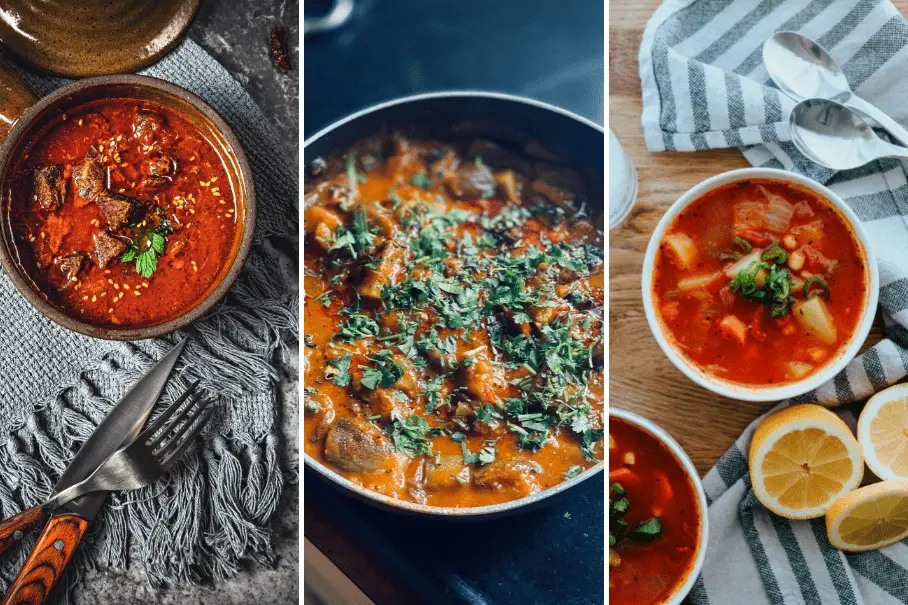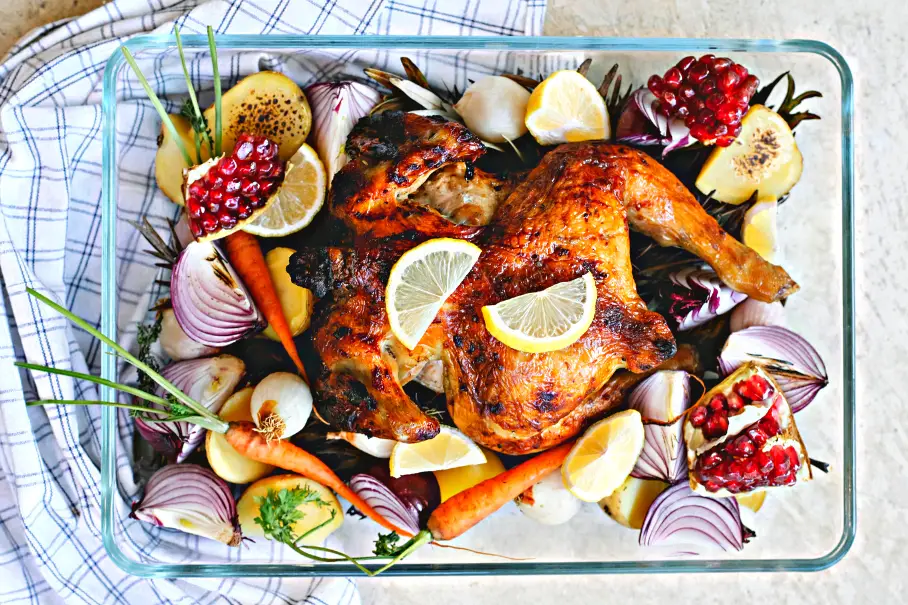This post may contain affiliate links. Please check our disclosure policy.
Homemade Maggi Seasoning Recipe
Discover the secret to elevating your culinary creations with the essence of Homemade Maggi Seasoning. This iconic blend has a rich history rooted in regional cuisines worldwide. Unleash a burst of umami and aromatic flavors that will transport your taste buds on a tantalizing journey. Whether you’re a seasoned cook or an aspiring chef, this recipe will empower you to craft dishes that are sure to impress. Let’s delve into the origins, uses, and benefits of this treasured seasoning.
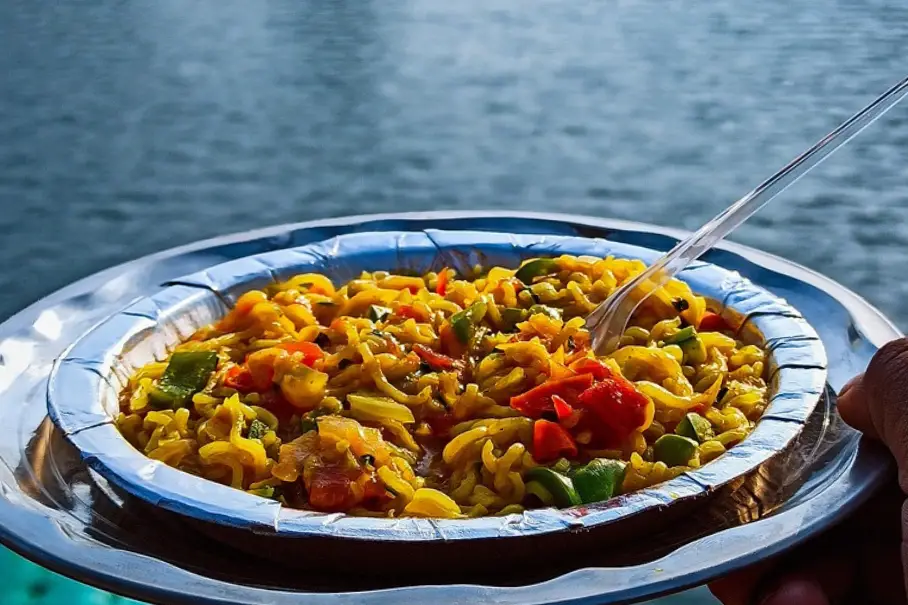
What Is Maggi Seasoning?
Maggi Seasoning, originally developed in Switzerland in the late 19th century, quickly gained popularity for its ability to enhance the flavors of various dishes. Over time, it spread across continents and embraced regional adaptations, becoming a beloved ingredient in kitchens worldwide. This homemade version allows you to recreate the essence of Maggi Seasoning, tailored to your taste preferences.
What Does This Homemade Maggi Seasoning Taste Like?
Homemade Maggi Seasoning offers a harmonious blend of savory, earthy, and herbaceous notes. The garlic and onion powders provide a robust base, while the black pepper adds a subtle kick. The combination of dried thyme, basil, and parsley infuses the blend with a delightful herbal freshness. The turmeric and smoked paprika lend a warm depth of flavor, while the celery seed and cumin add a hint of complexity. The resulting seasoning is a symphony of taste that will elevate your culinary creations to new heights.
Homemade Maggi Seasoning Ingredients
- Vegetable stock powder – 2 tablespoons
- Garlic powder – 2 tablespoons
- Onion powder – 1 tablespoon
- Ground black pepper – 1 tablespoon
- Dried thyme – 1 tablespoon
- Dried basil – 1 tablespoon
- Dried parsley – 1 tablespoon
- Ground turmeric – 1 teaspoon
- Smoked paprika – 1 teaspoon
- Celery seed – 1/2 teaspoon
- Cumin – 1/2 teaspoon
How to Make This Maggi Spice Blend Recipe
- In a small mixing bowl, combine all the ingredients.
- Mix well until the spices are thoroughly incorporated.
- Transfer the mixture to an airtight jar or container.
- Store in a cool, dry place to preserve the flavors.
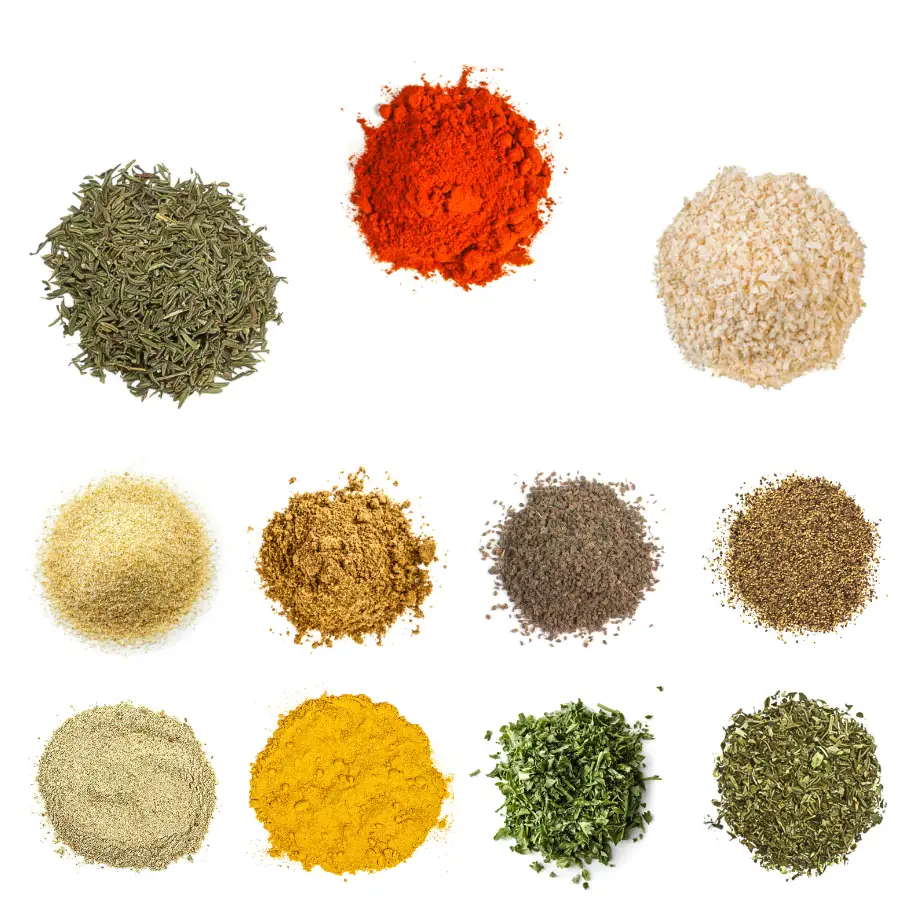
Can You Make Maggi Seasonings Ahead of Time?
Yes! This Homemade Maggi Seasoning can be prepared in advance and stored for several months, allowing you to have it readily available whenever inspiration strikes in the kitchen.
Can You Freeze Maggi Seasoning?
While freezing is not necessary for this seasoning blend, storing it in a cool, dry place will maintain its optimal quality.
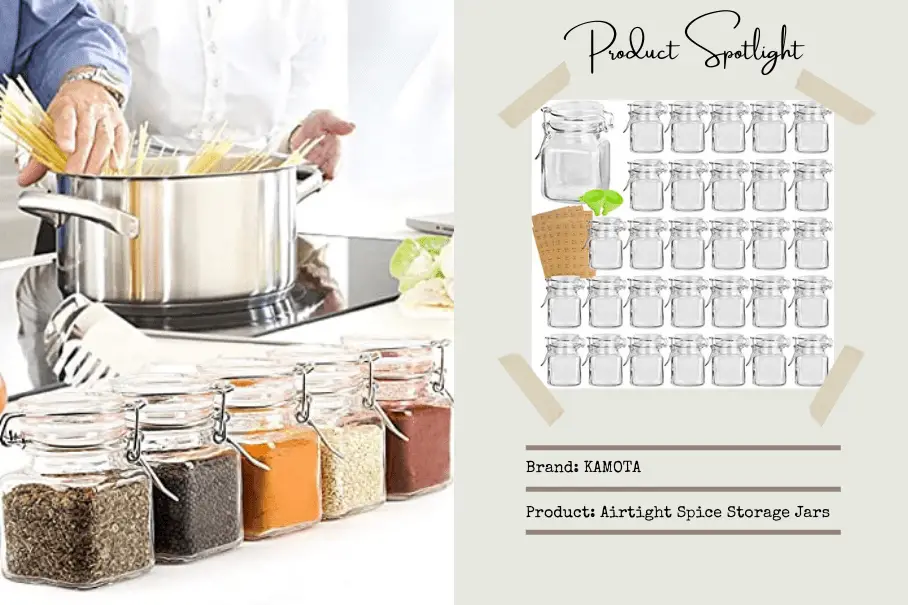
What to Serve with the Best Maggi Spice Mix?
Homemade Maggi Seasoning is a versatile culinary gem. Use it to enhance the flavors of soups, stews, casseroles, gravies, and sauces. Add a dash to marinades or rubs for meats, poultry, or vegetables. Its umami-rich profile also makes it a delightful seasoning for stir-fries and fried rice. The possibilities are endless!
Recipe Incorporating Maggi Seasoning:
Try this delightful recipe that showcases the exceptional flavors of Homemade Maggi Seasoning: “Maggi-Glazed Grilled Chicken Skewers.” Marinate succulent chicken pieces in a mixture of Homemade Maggi Seasoning, honey, soy sauce, and a hint of lime juice. Grill to perfection and savor the irresistible blend of flavors that will leave you craving more.
What Kitchen Tools Do I Need to Make Maggi Seasoning at Home?
- Small mixing bowl
- Measuring spoons
- Airtight jar or container for storage

Homemade Maggi Seasoning
Ingredients
- 2 tbsp vegetable stock powder
- 2 tbsp garlic powder
- 1 tbsp onion powder
- 1 tbsp ground black pepper
- 1 tbsp dried thyme
- 1 tbsp dried basil
- 1 tbsp dried parsley
- 1 tsp ground turmeric
- 1 tsp paprika
- ½ tsp celery seed
- ½ tsp ground cumin
Instructions
- In a small mixing bowl, add all the ingredients and mix them well.
- Transfer the mixture to an airtight jar or container and store in a cool, dry place.
- Use the seasoning to enhance the flavor of soups, stews, casseroles, gravies, and sauces.

What does Maggi sauce taste like?
Maggi seasoning has a unique flavor profile. It smells and tastes like lovage, an herb that combines the flavors of celery, parsley, and fennel. Some people even colloquially call lovage “maggikraut” in Germany and “maggiplant” in the Netherlands. The sauce itself has hints of fermented black beans, oil-cured olives, and a savory, umami-rich quality. It’s a bit like soy sauce but with deeper complexity.
Where is Maggi seasoning from?
Maggi seasoning was invented in Switzerland during the late 1800s by culinary entrepreneur Julius Maggi. His goal was to create a convenient and inexpensive flavor enhancer for working-class individuals. The first factory was established in Singen, Germany in 1887. In Germany, it’s known as Maggi Würze, where “würze” means spice or seasoning.
What is Maggi sauce?
Maggi seasoning is a food flavor enhancer available in various forms: thin, concentrated dark brown liquid, granulated powder, and cubes. It’s made from hydrolyzed vegetable protein, which is rich in glutamic acid (similar to MSG). This gives it a meaty, umami flavor. Maggi is used globally in sauces, stir-fries, soups, and more.
How to use Maggi seasoning?
Maggi is incredibly versatile:
- Add it to soups, stews, and noodle dishes for depth of flavor.
- Sprinkle it on cooked meats or vegetables.
- Mix it into scrambled eggs or hard-boiled eggs.
- Enhance mayonnaise, Bloody Marys, and even dirty martinis.
- Use it as a final seasoning in dishes, starting with just a dash.
Substitute for Maggi seasoning:
If you don’t have Maggi, consider these alternatives:
- Worcestershire sauce combined with soy sauce (equal parts).
- Kitchen Bouquet (great for browning and thickening gravy).
- Tamari sauce (less intense than regular soy sauce).
- Gold Mountain Seasoning Sauce (similar to Maggi).
- Beef bouillon (for a savory boost).
- Gravy master, lovage, or Bragg’s Liquid Aminos 345.
Remember, while these substitutes won’t be identical, they’ll add savory depth to your dishes just like Maggi does!
Why does Maggi seasoning taste so good?
Maggi seasoning has a unique flavor profile. It smells and tastes like lovage, an herb that combines the flavors of celery, parsley, and fennel. Some people even colloquially call lovage “maggikraut” in Germany and “maggiplant” in the Netherlands. The sauce itself has hints of fermented black beans, oil-cured olives, and a savory, umami-rich quality. It’s a bit like soy sauce but with deeper complexity.
Is Maggi the same as Worcestershire sauce?
No, Maggi and Worcestershire sauce are not the same. While both are savory condiments, they have distinct differences:
Maggi: Made from hydrolyzed vegetable protein, Maggi has a salty taste and is used as a flavor enhancer. It’s popular in European, Middle Eastern, and South Asian cuisines. Chinese restaurants also use it in their dishes.
Worcestershire sauce: Invented in England, Worcestershire sauce contains fermented anchovies, vinegar, tamarind, onions, and spices. It has a tangy, sweet, and umami flavor. While they share some similarities, Worcestershire sauce has vinegary notes that Maggi lacks.
What herb tastes like Maggi?
Lovage is an herb that closely resembles the flavor of Maggi seasoning. It has hints of onion, celery, and a citrusy note. In some regions, lovage is even called the “Maggi plant” due to its similarity in taste.
Do Chinese restaurants use Maggi seasoning?
Yes, Chinese restaurants often use Maggi seasoning. It pairs well with stir-fried dishes, lobsters, beef, and other savory creations. Its unique umami flavor enhances Chinese cuisine.
Is Maggi the same as bouillon?
No, Maggi is not the same as bouillon. Bouillon is typically a concentrated broth made from simmering meat, vegetables, and seasonings. Maggi, on the other hand, is a flavor enhancer made from hydrolyzed vegetable protein and other ingredients.
Does Maggi all-purpose seasoning have MSG?
Maggi seasoning contains hydrolyzed vegetable protein, which is high in glutamic acid (similar to MSG). While it shares some similarities, it’s not identical to MSG. Maggi is often used as a substitute for meat extracts like broth or stock.
What is Maggi seasoning vs. soy sauce?
Maggi seasoning and soy sauce both add umami to dishes, but they’re made differently. Maggi is derived from wheat protein, while soy sauce comes from soybeans. Maggi has a deeper, more complex flavor than soy sauce.
What is the chemical in Maggi masala?
Maggi masala contains various spices and flavorings. The exact chemical composition depends on the specific Maggi masala variant. Common ingredients include salt, spices, onion powder, garlic powder, and other seasonings.
What is the healthier version of Maggi?
For a healthier alternative, consider using low-sodium soy sauce or liquid aminos. These options provide umami flavor without excessive salt. Additionally, explore natural herbs and spices to enhance your dishes.
Can I replace soy sauce with Maggi seasoning?
While they have similarities, Maggi and soy sauce have distinct flavors. You can substitute Maggi for soy sauce in some recipes, but be aware of the differences. Experiment and find what works best for your taste preferences!
